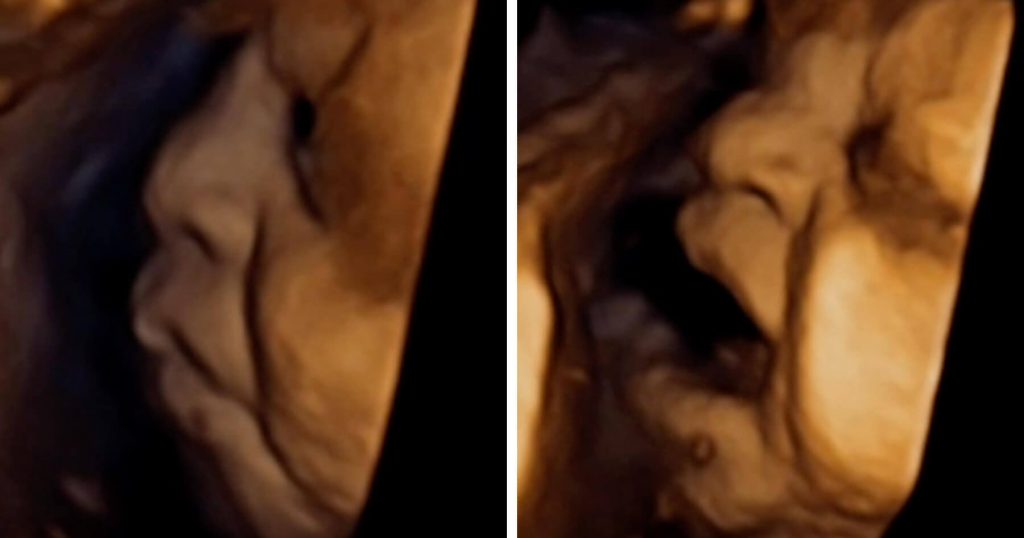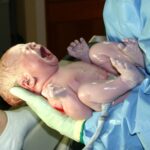Blog Post
New study provides more evidence that babies in the womb feel pain
One of the key debates in the abortion wars has been whether or not the pre-born child in the womb can feel pain. If she can, the abortion procedure is not only the unethical destruction of a unique, living, whole human being–it is an unmitigated brutality. Pre-born children can feel themselves being physically pulled apart in the womb by metal tools, a thought that should make every civilized person shudder. To be clear: Abortion is wrong regardless of whether the child being killed experiences pain, and it is wrong when perpetrated on humans too young to feel pain. But the reason abortion activists are so insistent that children in the womb do not feel pain until near birth is because they recognize that most people will have a visceral, moral reaction against feticide if they understand this and consider it carefully. It bears mentioning, however, that most abortion activists support abortion until birth regardless. Last year, I conducted an extensive interview with the researcher who recently presented new evidence that children in the womb feel pain much earlier than we previously thought:
Since then, a new study has come out adding more data to the growing body of evidence that pre-born children can experience pain. If you’re interested, read the following, from U.K. Right to Life:
A new study has shown that unborn babies undergoing an anaesthetic injection into their thigh ahead of intrauterine surgery exhibit changes in facial expression similar to newborn babies experiencing pain.
The study, published at the end of last month by a team of researchers in Brazil, ‘Sorting pain out of salience: assessment of pain facial expressions in the human fetus’, found a difference in response between those fetuses exposed to a painful stimulus (an anaesthetic injection) and those who were not.
Thirteen mothers participated in the study, their babies being between approximately 28 to 34 weeks’ gestation. Five of the babies were known to have a diaphragmatic hernia, whilst the other eight were healthy. These thirteen babies were subsequently divided into three groups: 1) “acute pain group” – these were those five babies with a diaphragmatic hernia who received an anaesthetic injection into their thigh prior to intrauterine surgery; 2) “control group at rest” – the facial expressions of the babies in the womb were recorded during a routine ultrasound; 3) “control group acoustic startle” – the facial expressions of the babies in the womb were recorded during an “acoustic stimulus”.
Fetal facial expressions were recorded before and after stimulus
Using a “high-definition 4-dimensional ultrasound (4D-US)” machine, the facial expressions of the babies in the acute pain group were recorded for “45 seconds before and 45 seconds after the anesthetic injection to the thigh”. In the control group, during a scheduled ultrasound, facial expressions were similarly recorded “after a 5-minute period of rest for the mother, in a quiet and dark room for 45 seconds”. Finally, in the third group “Fetal facial expressions were recorded for 45 seconds before and after the acoustic stimulus”.
The recordings for each group were anonymised and reviewed by “2 blinded researchers who independently scored the facial pictures of each fetus using the Neonatal Facial Coding System” (NFCS) which monitors ten items of facial expression in neonates to evaluate the degree of pain experienced. These items include: brow lowering, eyes squeezed shut, deepening of the nasolabial furrow, open lips, horizontal mouth stretch, vertical mouth stretch, lip purse, taut tongue, tongue protrusion, chin quiver, neck deflection, and yawning. (These last two items were added specifically for this research on the unborn).
Acute pain group participants exhibited an acute pain-related facial response “that may have been experienced as pain”
Each of these items was given 1 point if present and zero if absent. “The product of the screenshot assessment was a single score (between zero and 12) for each fetus.” In the final results, a number of items on the NFCS were removed so that the facial features analysed included: (1) “brow lowering,” (2) “eyes squeezed shut,” (3) “deepening of the nasolabial furrow,” (4) “open lips,” (5) “horizontal mouth stretch,” (6) “vertical mouth stretch,” and the newly added item, (7) “neck deflection”.
Out of these seven features, the study found that “no control fetus scored higher than 4, while in the AP [acute pain] group, no score was less than 5”.
The paper concludes: “our data indicate AP [acute pain] group participants exhibited an acute nociceptive-related [pain-related] facial response, that may have been experienced as pain”.
The paper does acknowledge that “pain cannot be inferred from” facial expression alone. “So, it must [be] pointed out that what was measured in the AP group is not pain per se, but, instead, the acute facial expression responses after a clear noxious stimulus”.
However, the paper also admits that while this is not definitive proof that the baby in the womb, at least at this stage of development, is capable of feeling pain, the “inability to communicate does not negate the possibility that a human […] experiences pain” and that the “acute nociceptive-related [pain-related] facial response […] may have been experienced as pain”.
Increasing evidence of fetal pain
The evidence gathered in this study coheres with the increasing evidence that the unborn can experience pain. Last year, a large number of MPs attended a Parliamentary webinar hosted by the All Party Parliamentary Pro-Life Group (APPPG) to discuss the evidence indicating that the unborn baby may feel pain from as early as 12 weeks’ gestation.
Parliamentarians from across the political spectrum heard from John C Bockmann PA, a U.S. Army physician assistant and member of the Conner Troop Medical Clinic at Fort Drum, New York, and Dr Stuart WG Derbyshire, an Associate Professor in Psychology at the National University of Singapore.
The two recently collaborated on the Journal of Medical Ethics article ‘Reconsidering Fetal Pain’. Though they hold ‘divergent views regarding the morality of abortion’, they approach the issue of fetal pain based on recent scientific and medical developments.
“Good evidence” that the fetus can feel pain from 12 weeks’ gestation
Both Dr Derbyshire and John C Bockmann PA believe there is “good evidence” that the brain and nervous system, which start developing at 12 weeks’ gestation, are sufficient for the baby to feel pain. In their study, they argue that women considering abortion at this stage of pregnancy should be told about the pain their unborn baby could experience while being terminated.
Currently, the use of fetal pain relief in the UK is not required by law or advised in official NICE (National Institute for Health and Care Excellence) or RCOG (Royal College of Obstetricians & Gynaecologists) guidelines.
Right To Life UK spokesperson, Catherine Robinson, said: “There is increasing evidence that many babies in the UK are experiencing pain during abortions”.
“As this paper is keen to emphasise, the facial expressions seen on the unborn after undergoing an anaesthetic injection into their thigh is not direct proof that pain is experienced. This is in large part due to how pain is defined and the subjective nature of pain – not just for the unborn of course, but for all sentient beings. Nevertheless, the ordinary means by which we detect that another is in pain is through their outward expressions, whether facial, verbal or otherwise. That an unborn child would exhibit similar facial expressions to a neonate when subjected to a similar painful stimulus is indeed yet more powerful evidence of the likely suffering that these unborn children are undergoing”.
“Of course, the likely suffering experienced when receiving an anaesthetic injection is a regrettable necessity given the surgery they are about to undergo. We can only imagine how it is possibly much worse for babies who are given a lethal injection of potassium chloride to their heart in a late-term abortion.This is the same chemical used to execute inmates in the US. The administration of potassium chloride in executions is considered so painful that it is considered necessary to first administer an anaesthetic before its use in state executions.
“In the recordings of these babies, the reaction to the painful stimulus is immediate and obvious. This research is essential to the pro-life movement as it could do so much to help further highlight the humanity of the unborn child”.









Two things: 1) The collection of cells at conception develop into a human being. It is not valid to pick out any point at any stage and say, “this is not a human being and may be aborted.” The potential human being is there at conception, therefore this is a human being.
2) I think this study is looking at the same evidences of pain that make pain undeniably evident in any human being outside of the womb. If such a person is severely hampered in some way and can’t express their experience of pain vocally or by attempts at self protection, we would see other evidences such as these that we would say, “this person is feeling pain, whatever is causing this person’s pain must stop.”
I am writing these things down about halfway into this interview to organize my thoughts. The main value of this study is to educate people who currently believe pro-choice is okay but still have a conscience that can be turned to what is right. I don’t think any kind of blatant evidence can turn those who outright defend abortion for whatever reason – a twisted mind won’t hear these things.
Unfortunately this isn’t the pro-life slam dunk that we need it to be. Abortionists would just give the baby an anesthetic before beginning the dismemberment, or otherwise modify the abortion procedure so that it’s relatively painless. George Tiller the Baby Killer was known for advertising kinder, gentler late-term abortions. He also offered burial services and even hugged his patients.